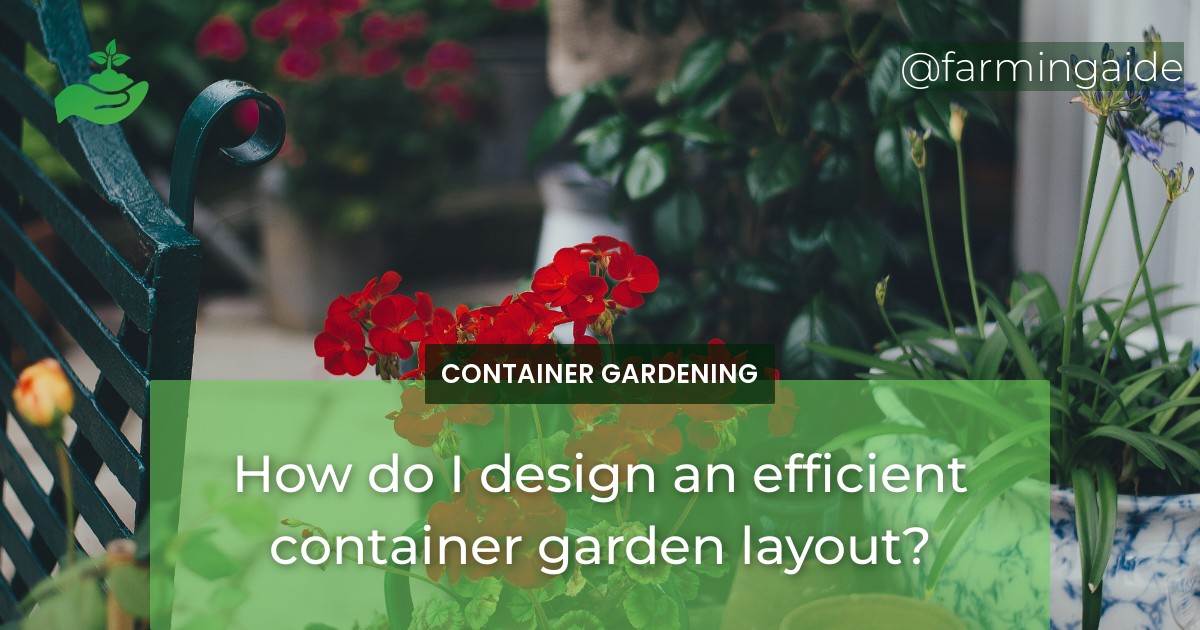Container gardening is a great option for those with limited outdoor space or who want to add some greenery to their balcony, patio, or deck. However, designing an efficient layout is crucial for maximizing space, optimizing plant growth and yield, saving time and effort, and enhancing aesthetic appeal. In this article, we will discuss the factors to consider before designing a layout, the benefits of an efficient layout, steps to design an efficient layout, and tips for maintenance and care.
Benefits of Efficient Layout in Container Gardening
- Maximizes space.
- Optimizes plant growth and yield.
- Saves time and effort.
- Enhances aesthetic appeal.
Factors to Consider Before Designing a Layout
Container Type and Size
When choosing containers, consider the suitability for the plant’s size and root depth, accessibility for watering and maintenance, compatibility with the overall design. Some plants require deeper containers, while others can thrive in shallower ones. The container must be big enough to accommodate the plant’s mature size and allow room for root expansion.
Plant Selection
Choose plants that are suitable for the container size and type, have complementary growth rates and heights, and have similar sun and shade preferences. The plant’s water and nutrient requirements must also be taken into consideration. Group plants based on their moisture needs, so they can be watered together and prevent over or under watering.
Climatic Conditions
Environmental factors such as temperature and humidity variations, wind and sun exposure, and seasonal changes should be considered when designing a container garden layout. Some plants prefer full sun, while others prefer partial shade, so it’s essential to place them accordingly. Wind can dry out the soil and damage fragile plants, so it’s important to provide a windbreak or choose sturdier plants that can withstand wind.
Water and Nutrient Requirements
The soil type and quality, drainage and aeration, and fertilizer and compost needs must be taken into account when designing a layout. Most plants require well-draining soil, so they don’t become waterlogged and develop root rot. The soil should be rich in nutrients, so the plants can grow healthy and strong. Fertilizer and compost are essential for providing the necessary nutrients for plant growth and development.
ALSO READ
Steps to Design an Efficient Layout
Choose a Container
Consider the factors outlined above when choosing containers. Use a variety of container sizes and types, so you can accommodate different plant sizes and provide visual interest. Group plants with similar needs together, so you can water them simultaneously and avoid over or under watering.
Plan the Layout
Draw a scaled diagram of the space and containers, so you can visualize the layout before planting. Allocate spaces based on plant needs and aesthetic appeal. Consider vertical gardening options, such as trellises or hanging baskets, to save space and add visual interest.
Soil Preparation and Planting
Use a high-quality potting mix that’s well-draining and rich in nutrients. Add organic matter, if necessary, to improve soil structure and fertility. Plant according to the layout plan, making sure to provide enough space for root expansion.
Maintenance and Care
Water and fertilize regularly, monitor for pests and diseases, prune and trim as needed. Remove dead or damaged foliage, so the plant can focus its energy on new growth. Provide support for tall or bushy plants, so they don’t topple over.
How Can I Design an Efficient Container Garden Layout for my Vegetable Garden?
When planning a container vegetable garden layout, considerations such as sunlight exposure, available space, and drainage are vital. Choose compact varieties for small containers and group vegetables with similar water and sunlight needs. Ensure the layout allows for easy access and maintenance to promote healthy growth and abundant harvests.
Conclusion
An efficient container garden layout is essential for optimizing plant growth and yield. Consider container type and size, plant selection, climatic conditions, and water and nutrient requirements before designing a layout. Choose a suitable container, plan the layout, prepare the soil, and plant accordingly. Regular maintenance and care are crucial for a successful container garden.


